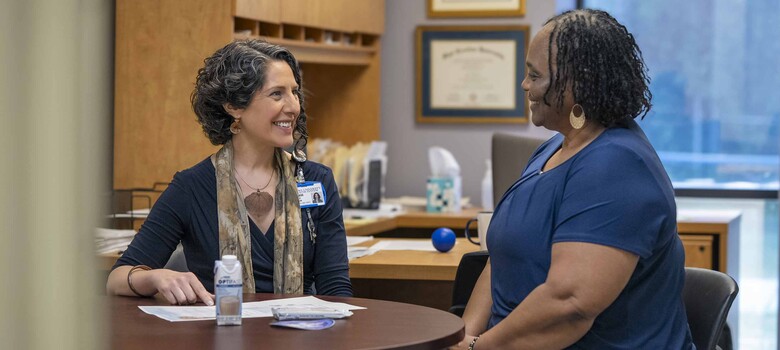 From the DukeHealth.org archives. Content may be out of date.
From the DukeHealth.org archives. Content may be out of date.
View the Eclipse Safely with These Expert Tips

As excitement about the April 8 solar eclipse builds, it’s important to know how to safely view the event and understand how even everyday exposure to the sun can damage vision. Duke retina specialist and ophthalmologist Lejla Vajzovic from the Duke Eye Center shares her insights.
How does the sun damage eyes?
Anytime you stare at the sun, you risk damaging your eyes, because the sun causes a physical burn at the back of the eye. The retina is essentially an extension of the brain, and it’s made up of very thin cells, and when you stare at the sun, this can burn those sensitive cells. The damage might not be immediate – you could stare at the sun and your vision might seem fine for the rest of the day – but then the next morning awake and be shocked that your eyesight is impaired or even gone.
Are some people more susceptible to damage?
People who have any kind of macular degeneration – which affects the central part of the eye – need to be especially cautious with any sort of sun exposure. And anyone who has retinal dystrophy/degenertation, cataracts, or skin cancer should also take care to protect their eyes when outdoors.
Couldn’t I just fleetingly look at the eclipse and avoid problems?
If you are in one of the parts of the United States that is in the path of the total eclipse, there will be a brief moment when the moon will appear to completely cover the sun. For that very little bit of time, it would be safe to look. But you don’t want to risk looking too long, so it would be best not to. And most people will not be in the path of the total eclipse, and will instead see a partial eclipse. So at no point would it be safe to look at the event without protective eyewear.
Could I wear dark glasses or a good pair of UV-protective sunglasses?
No. Not even high-quality sunglasses or very dark lenses are adequate to protect your eyes if you want to view the eclipse. The only “eclipse glasses” sufficient for viewing this event include special-purpose solar filters. They must meet a very specific worldwide standard known as ISO 12312-2 (international safety standard), and any eyewear purchased for viewing the eclipse must have this designation.
According to the American Academy of Ophthalmology and the American Astronomical Society, only four manufacturers have certified that their eclipse glasses and handheld solar viewers meet international safety standards:
- Rainbow Symphony
- American Paper Optics
- Thousand Oaks Optical
- TSE 17
Another option is to view the eclipse through #14 welder's glass, which is much darker than the shades arc welders typically wear.
The American Academy of Ophthalmology and the American Astronomical Society teamed up to offer this additional advice:
- Inspect your solar filter before the eclipse, and don't use it if it's scratched or damaged.
- Use solar filters on camera lenses, binoculars, and telescopes.
- Do not use solar eclipse glasses to look through a camera, binoculars, or a telescope. The sun can melt the filter and damage your retina.



